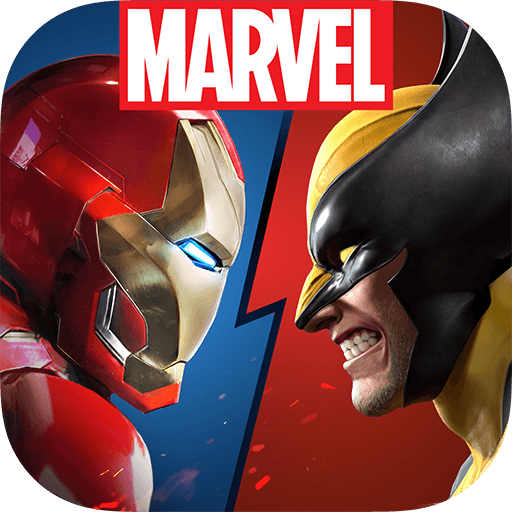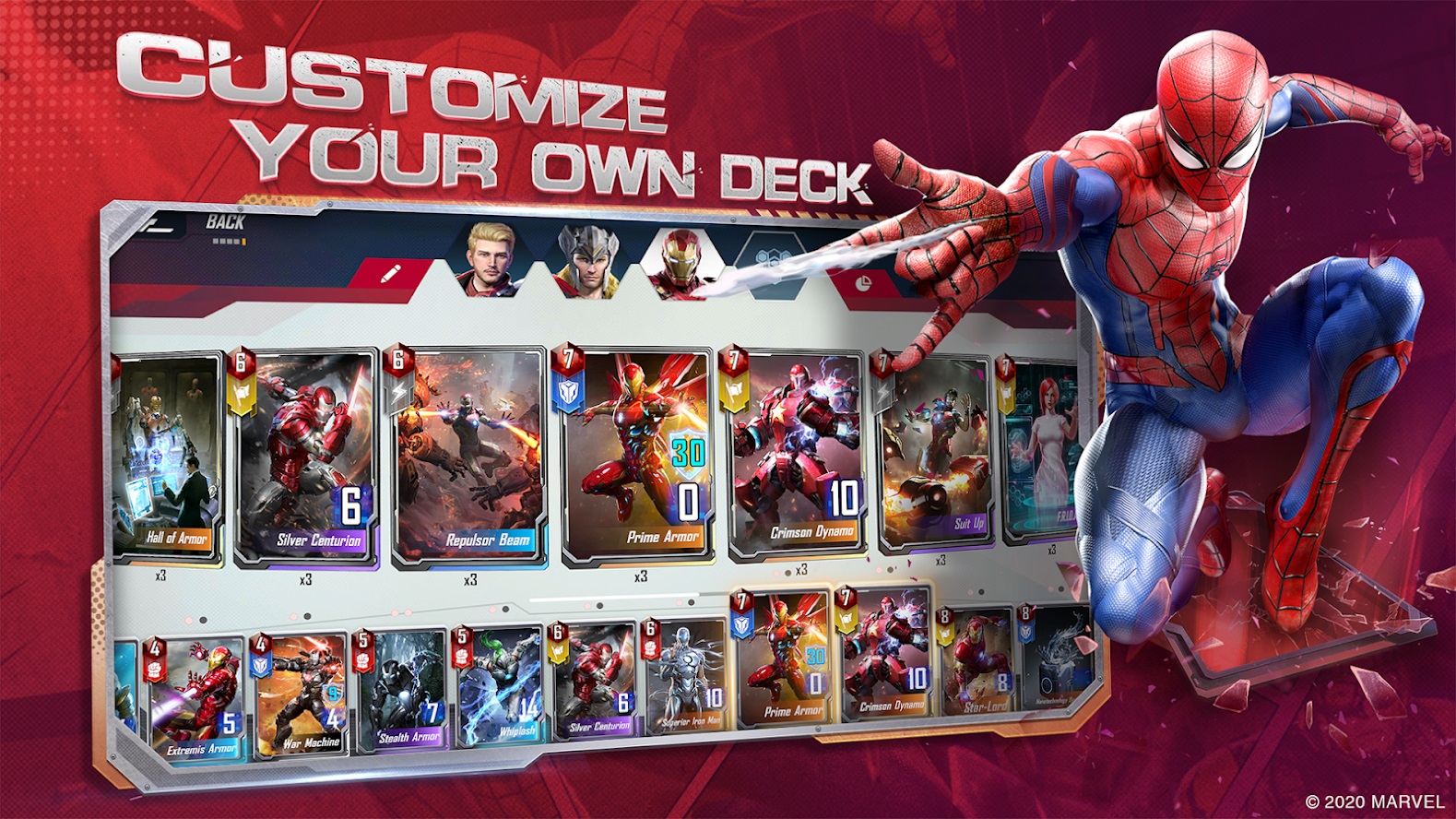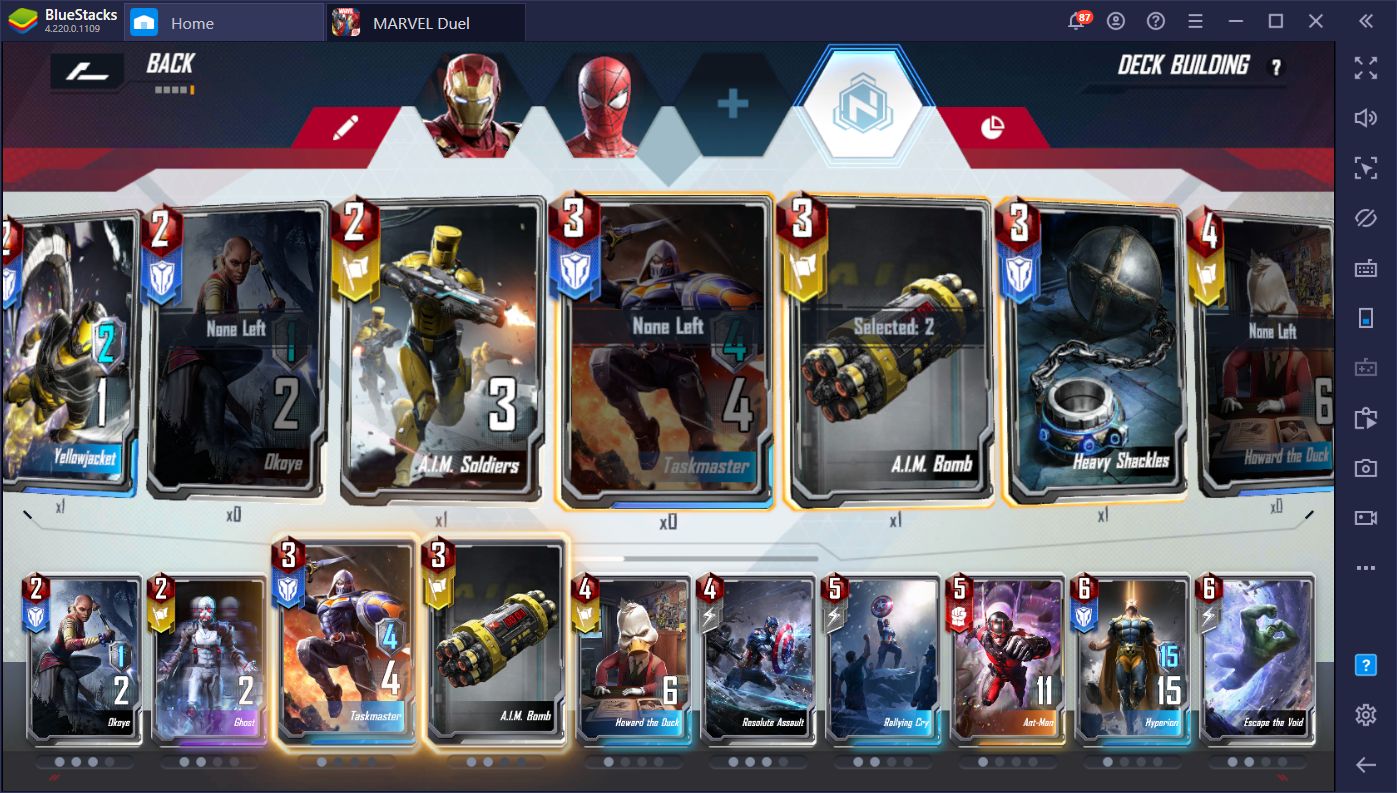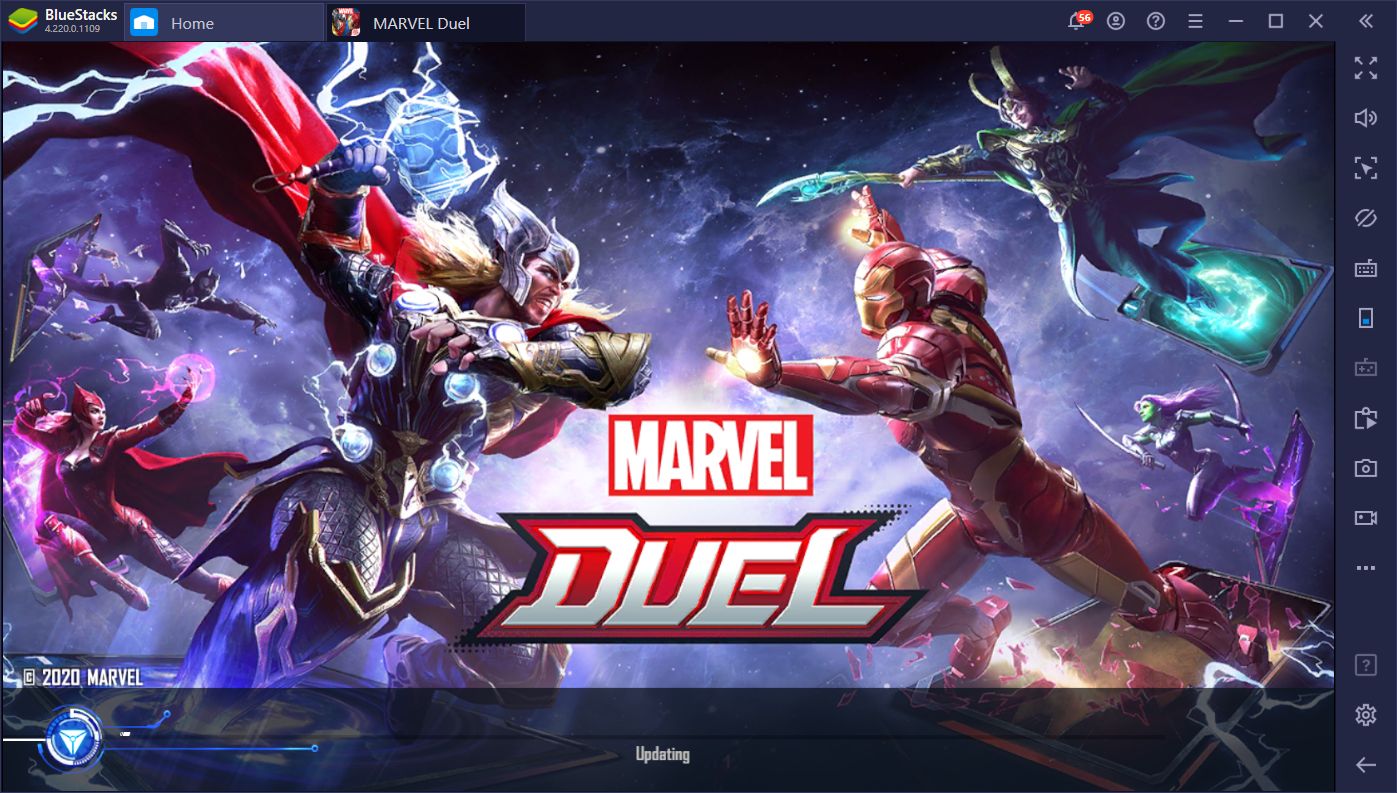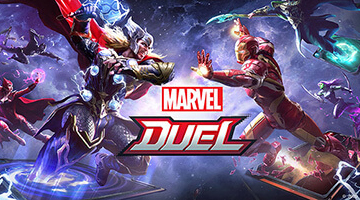Marvel Duel - Beginner’s Guide And Tips
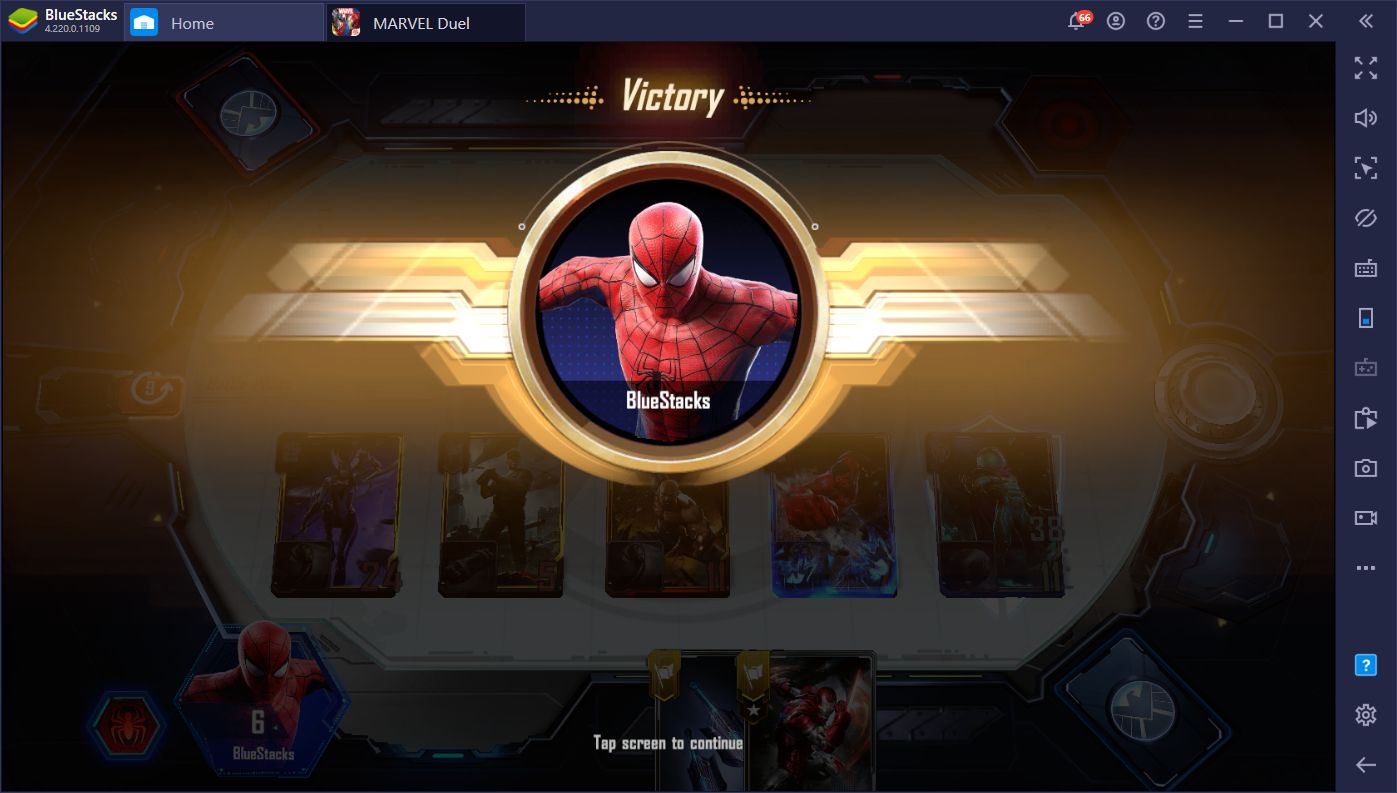
Marvel Duel is Netease’s latest release to the public in the form of a CCG based on the Marvel universe, and featuring the most popular characters from both the movies, comics, and all other alternate universes. The game has a concept similar to other card games like Hearthstone, Shadowverse, and Legends of Runeterra. However, it’s vastly different in the execution of its mechanics and its many systems, offering a unique experience and allowing the game to stand out on its own.
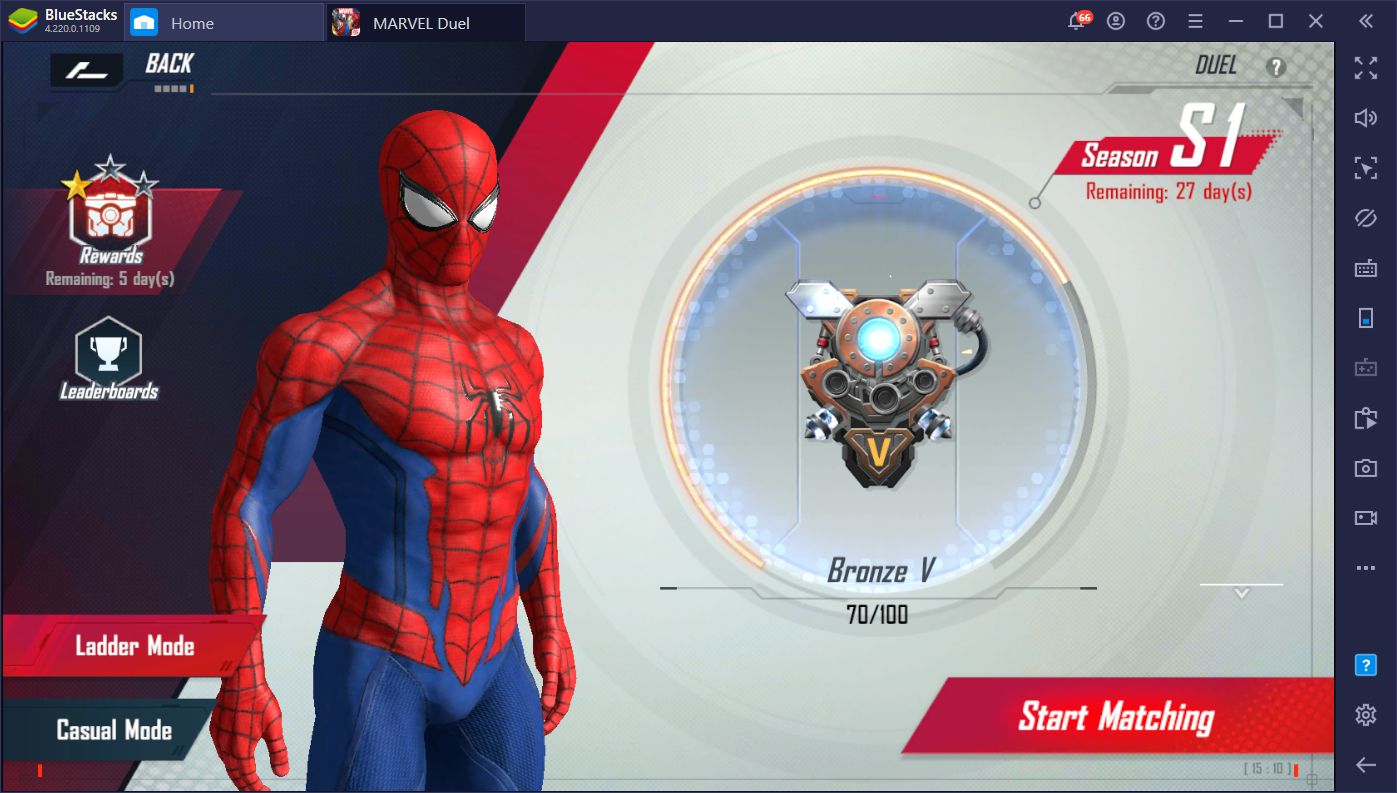
If anything, if you’re a fan of CCGs, but are burned out of the other popular titles, then Marvel Duel is a great alternative as it offers a different learning and mechanics that, hopefully, will grip you and make you fall in love with the genre once again, especially if you play it on PC with BlueStacks. That’s why, in this article, we want to talk about the game’s basic mechanics, and hopefully provide valuable information to help players get started on the right foot.
Super Heroes
First off, we have the Superheroes in Marvel Duel. This is the feature that mostly resembles other popular titles like Hearthstone as they define the general play style of your deck.
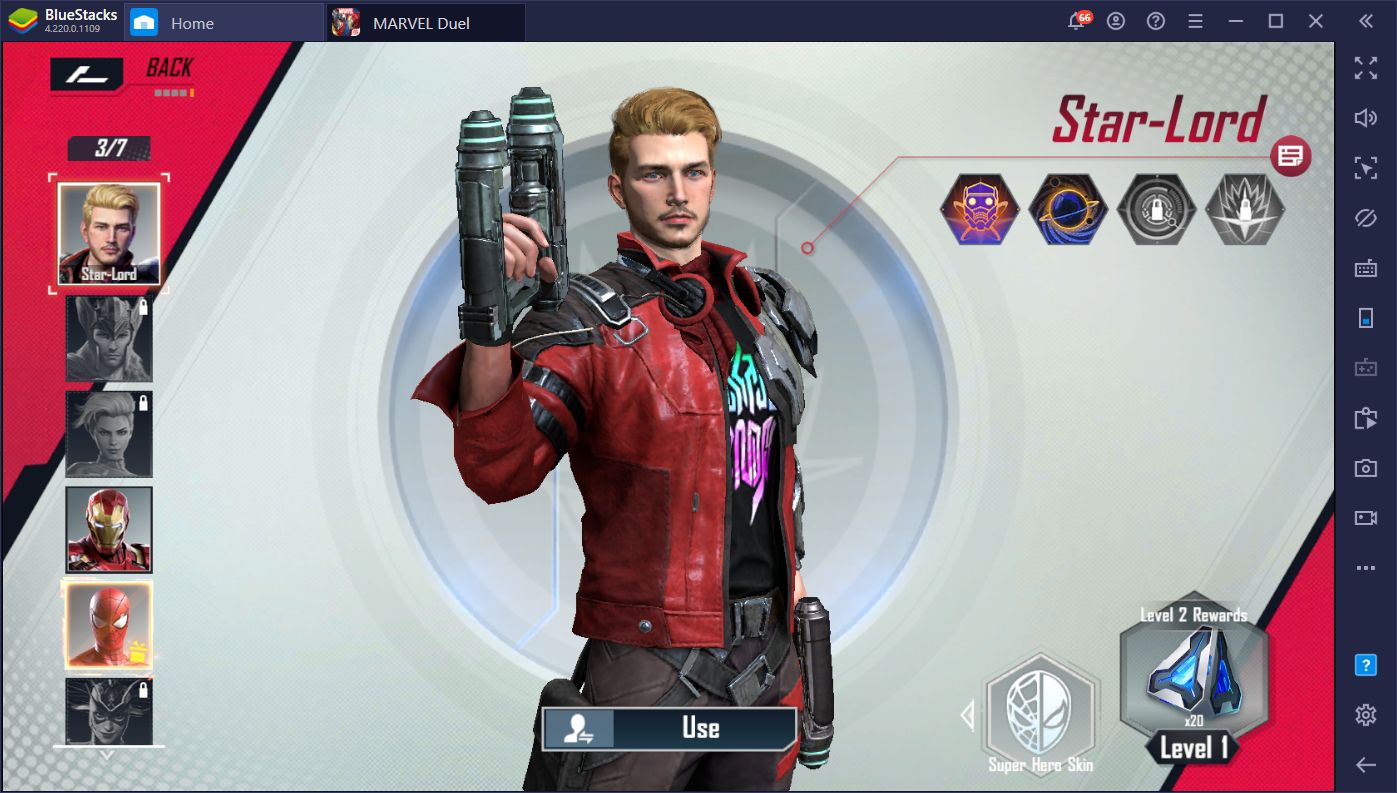
Simply put, every superhero is different and has a variety of cards associated with him or her, making them play very differently from each other. Some superheroes offer positive synergy with others, while others are more independent and don’t require much collaboration in order to create strong builds. Your selection of superheroes will, for the most part, define your strategy in every match.
At the moment, there are 7 heroes available in Marvel Duel:
- Thor: Focuses on defense and turtling against foes that rely on weaker aggro decks. A slow deck since it requires building up powerful units.
- Hela: Relies on protecting Maverick characters to trigger powerful effects as the battle goes on.
- Captain Marvel: Uses skill cards and can bypass guard to deal with turtling strategies.
- Star Lord: Has many GotG cards that can strengthen each other and create a strong frontline. Can deal large amounts of damage if built properly.
- Iron Man: An independent hero that doesn’t synergize well with others. His cards scale well with your shop level, gaining bonuses every time you upgrade the shop.
- Spider-Man: Has many cards that can summon other cards when dying, or that can gain bonuses when paired with other characters of the same type. A good aggro deck.
- Elektra: Has unique quests and challenges that you can complete to power up your Elektra card. Also has several units that can significantly empower your frontline.
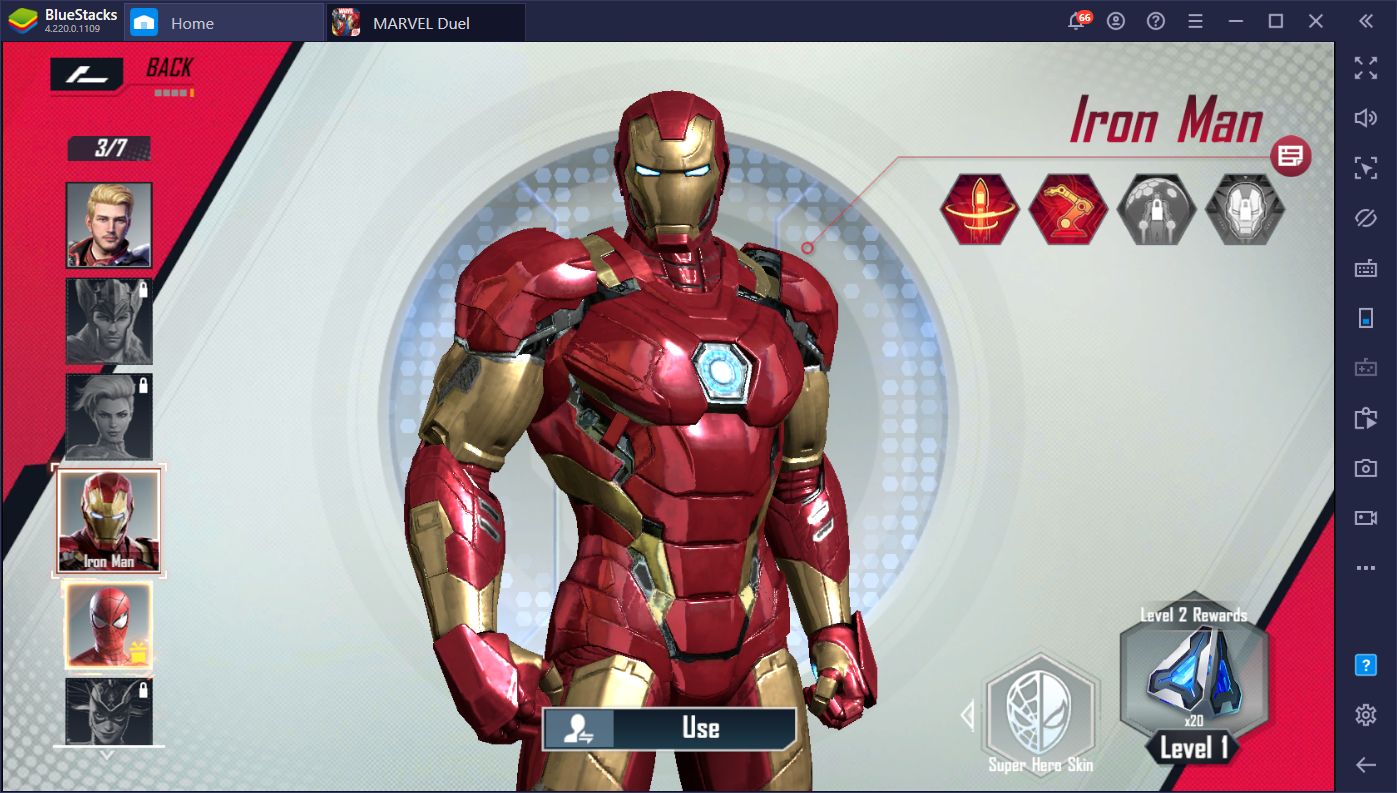
Every character also has a set of active and passive skills that you can learn during the match. These skills often cost gems to activate, but can give significant boosts, further increasing the uniqueness and utility of every superhero.
Preparing Your Deck
The decks in Marvel Duel are pretty standard, and this is easily the aspect that is the most similar to other CCGs.
Every deck needs to have at least 40 cards, and can feature up to 3 hero subdecks, with up to 10 cards of each, as well as a neutral subdeck, also with 10 cards. You can freely build your deck as long as you follow these restrictions.
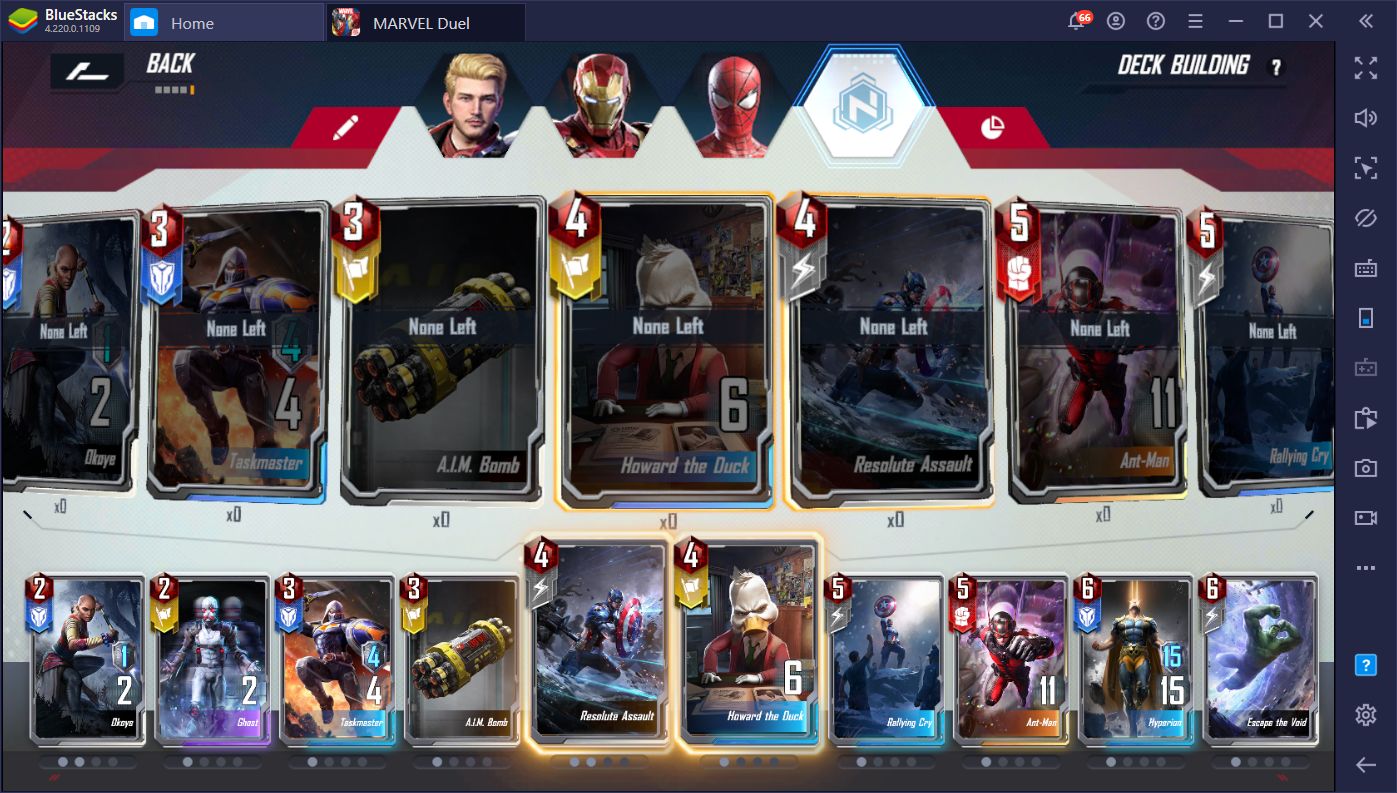
When it comes to choosing a superhero, however, this choice is independent from your deck as you can freely select it from another menu. In this sense, you don’t need to have Stark characters necessarily in order to use Iron Man as your superhero, and the same goes for all other characters.
The Combat System
Now, the battles are where Marvel Duel really stands out among the others due to its unique mechanics. Luckily, this system is pretty easy to understand once you get the hang of a few basic elements.
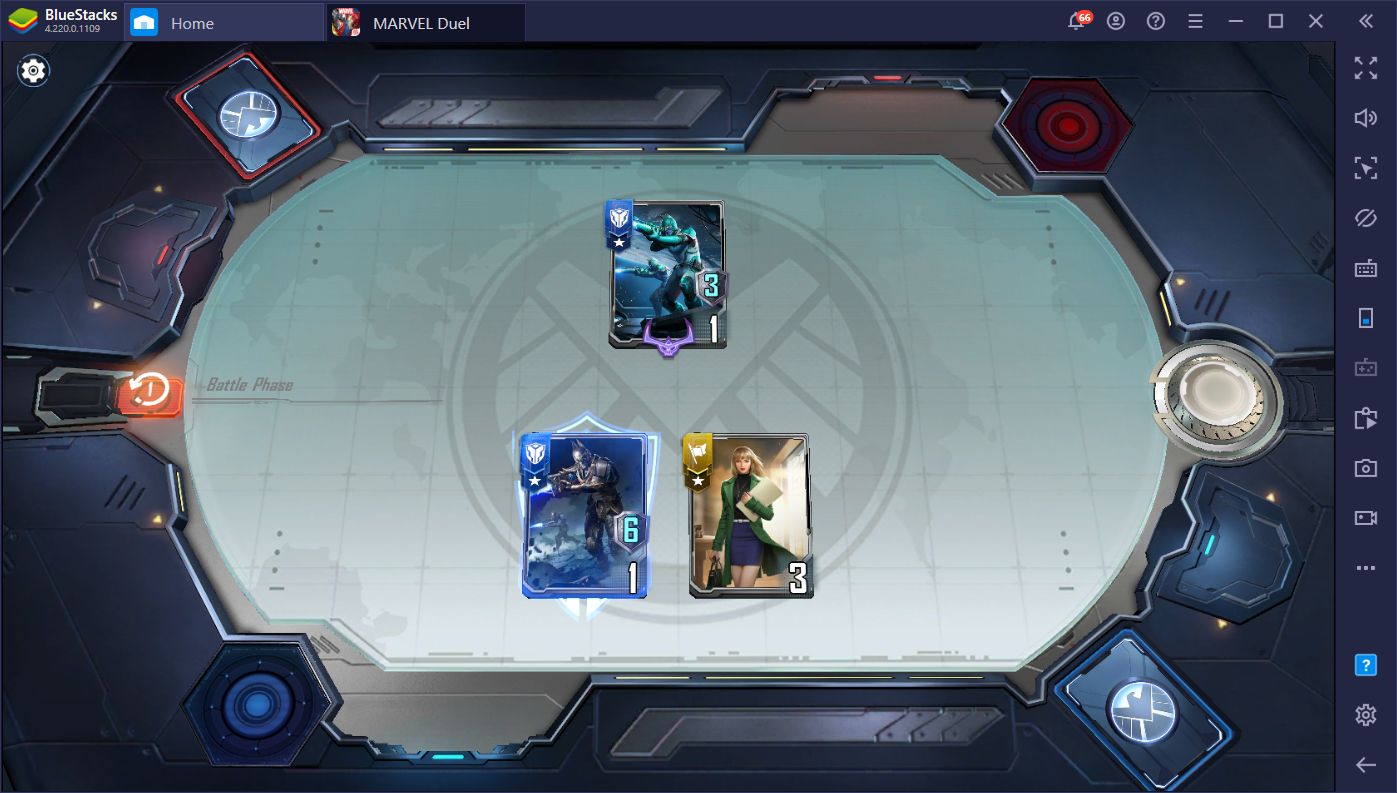
This game is played like a battle royale CCG, in which 6 players enter the match and take turns fighting each other, similar to how matches flow in an auto-battler. Every player starts off with 20 HP, and they take damage every time they lose a round, which is when all their characters are defeated. The damage they receive depends on the number of characters remaining on the winning team, their star levels, and their shop level. For instance, a player with three 2-star characters remaining, and level 5 shop will deal 11 damage to the enemy.
Since you will be fighting against 5 different players in every match, this game focuses more on building your own strategies rather than trying to counter the enemies’ formations. In this sense, you’ll need to concentrate on creating a strong frontline and boosting your units’ strengths, and crossing your fingers hoping that your enemies don’t have better cards or had a better start than you.
The Preparation Phase
All rounds start in the preparation phase where players can purchase cards from the store, as well as set new cards from their hand to the battlefield. Each and every card you play in this game must first be bought from the store, which offers a number of randomized cards from your deck.
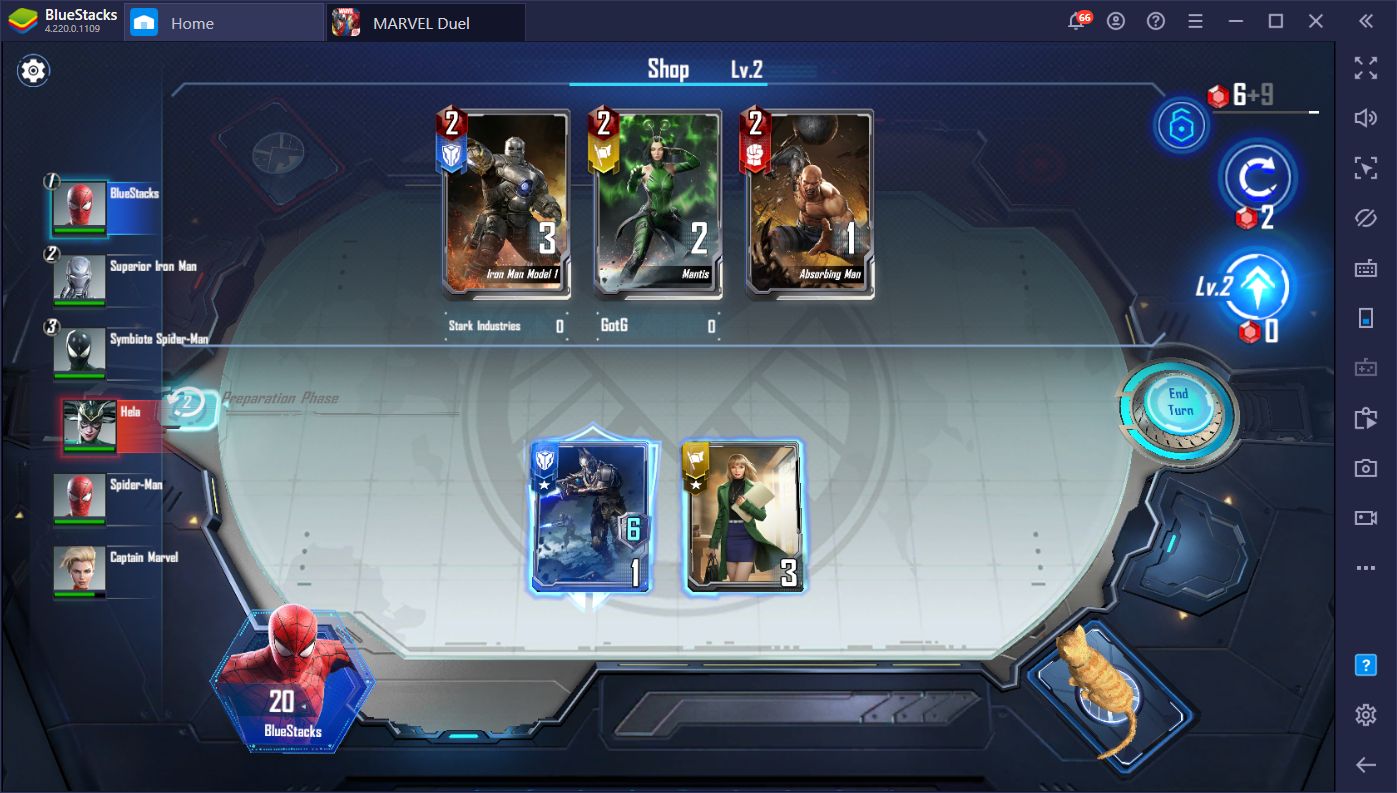
You must pay for these cards with battle gems, which is a currency that you generate automatically every turn. You can also use gems to upgrade your store level, which makes stronger cards available every turn. Specifically, your store level will determine the max gem cost of the cards you’ll get. For instance, if your store is level 4, you won’t be able to draw cards that require 5 gems or more to purchase, which can be considerably stronger than others.
Summoning cards to the field is free and can simply be done by dragging them from your hand to the board. You can also combine character cards of a similar level to create a stronger version of the same unit. For instance, two 1-star cards of the same character will combine to a 2-star version. Meanwhile, two 2-star cards will combine to a 4-star version, which is the strongest possible version of any character card. Keep in mind that, aside from increasing the card’s base states, combining them also improves their passive effects, so it’s always worth upgrading if you have the cards. Lastly, you can also sell cards from your hand or field by dragging them to the top of the screen.
The Combat Phase
Once you’ve set the cards on the field, you can end your turn by clicking on the button to the right of the field. This will transition the turn into the combat phase where your cards trade blows until one side is completely defeated. The characters on the field attack from left to right, both dealing damage to the enemy, and getting damaged in return. If a character has armor, it’ll be damaged there before suffering direct damage to their power. However, if a character has the “Puncture” skill, they can deal direct damage to a unit’s power.
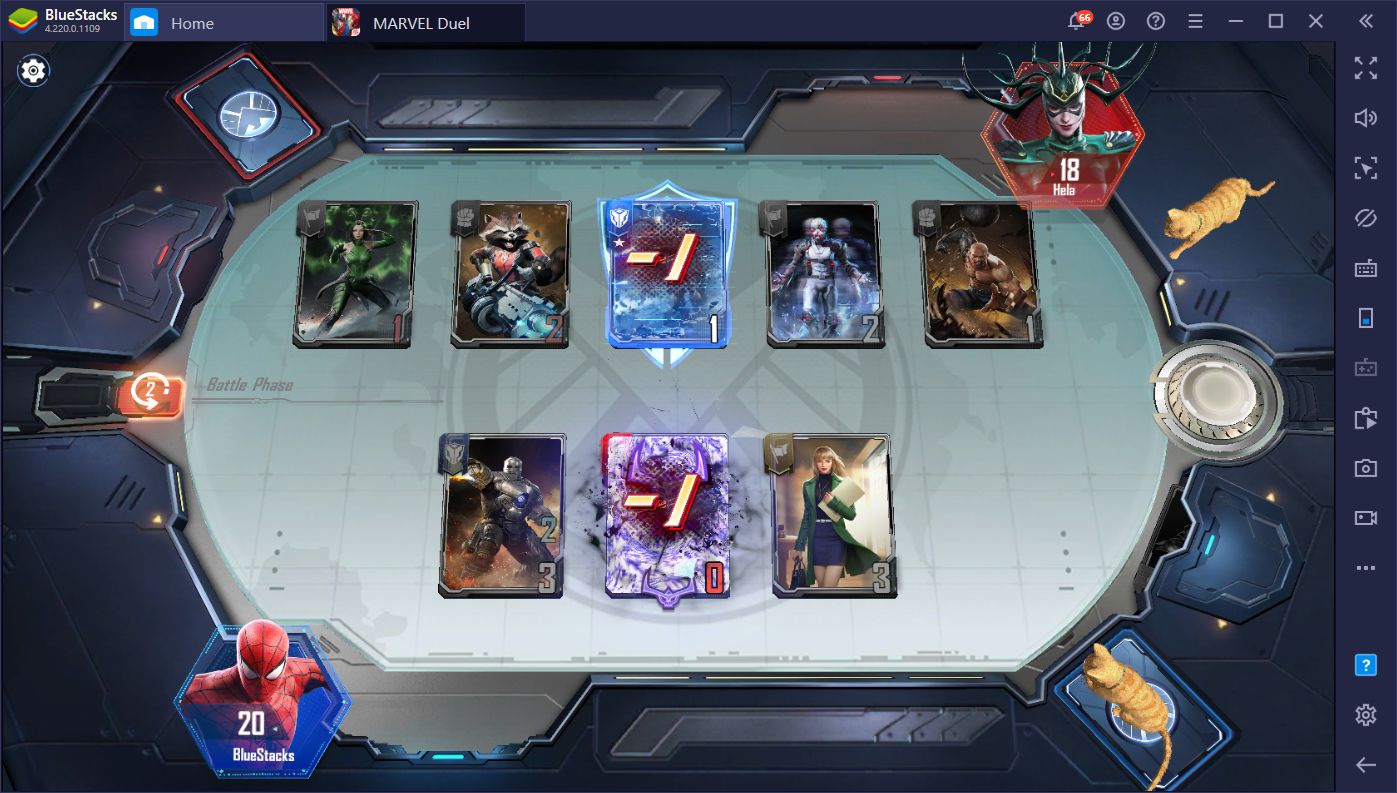
One of the most egregious parts of the combat system in Marvel Duel is that your characters attack randomly. There aren’t any reliable ways to target specific enemies on the field, so your hands are basically tied until the combat resolves. You CAN, however, use cards that have the “Guard” property, which forces the enemy to attack them first before moving onto your other units.
A character’s damage is determined by their power, which also represents their HP. This means that, as the character takes hits, they will also deal less damage in turn. It’s important to organize your cards so that your beefiest characters are on the left and take the first few hits while also softening the enemy for your attackers to clean the field. You can easily drag your characters with the mouse cursor for this purpose.
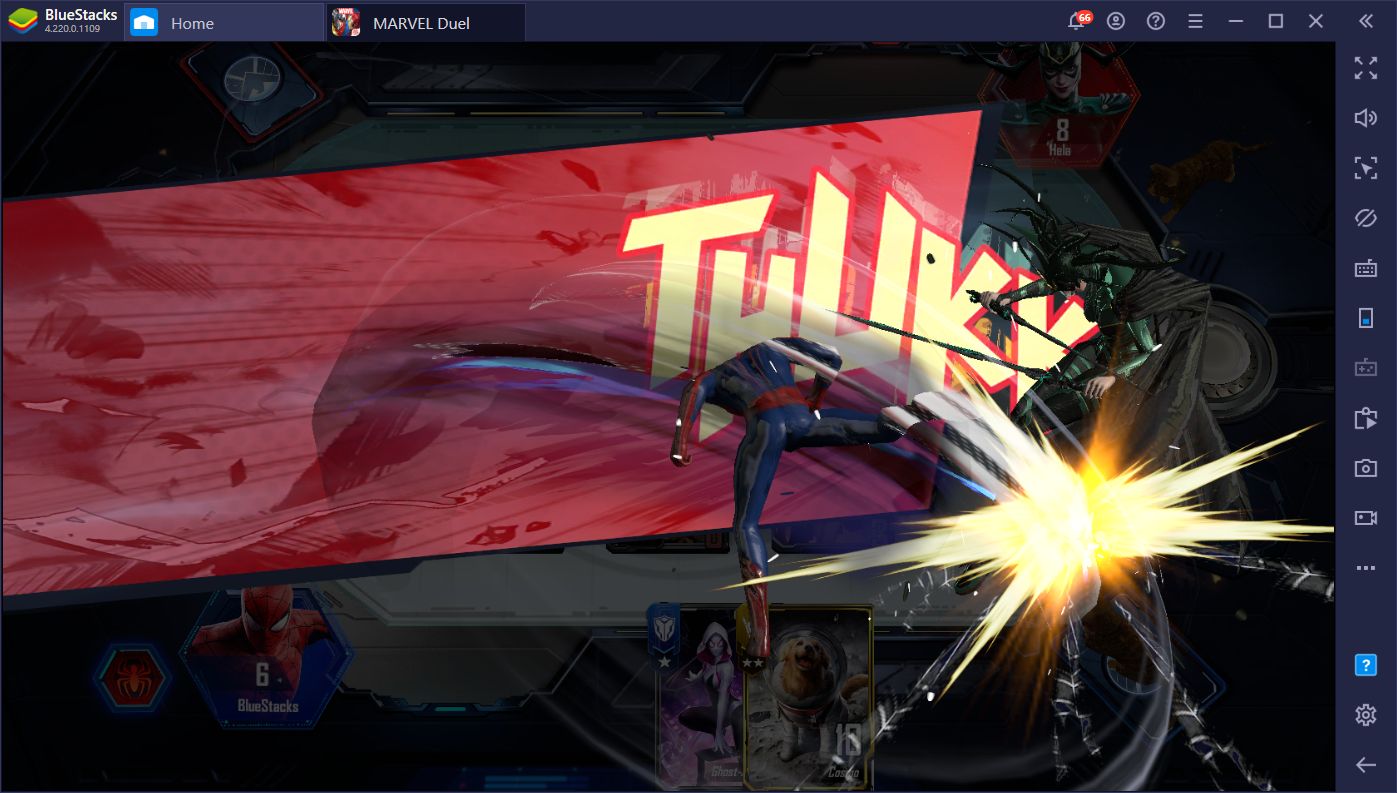

And that’s all the basics of Marvel Duel. There’s quite a lot more to talk about in this game, but this all you need to know in order to get started. Swing by our blog if you want to find more awesome guides on Netease’s brand new CCG. Let us know what you think about this game in the comments section below!

